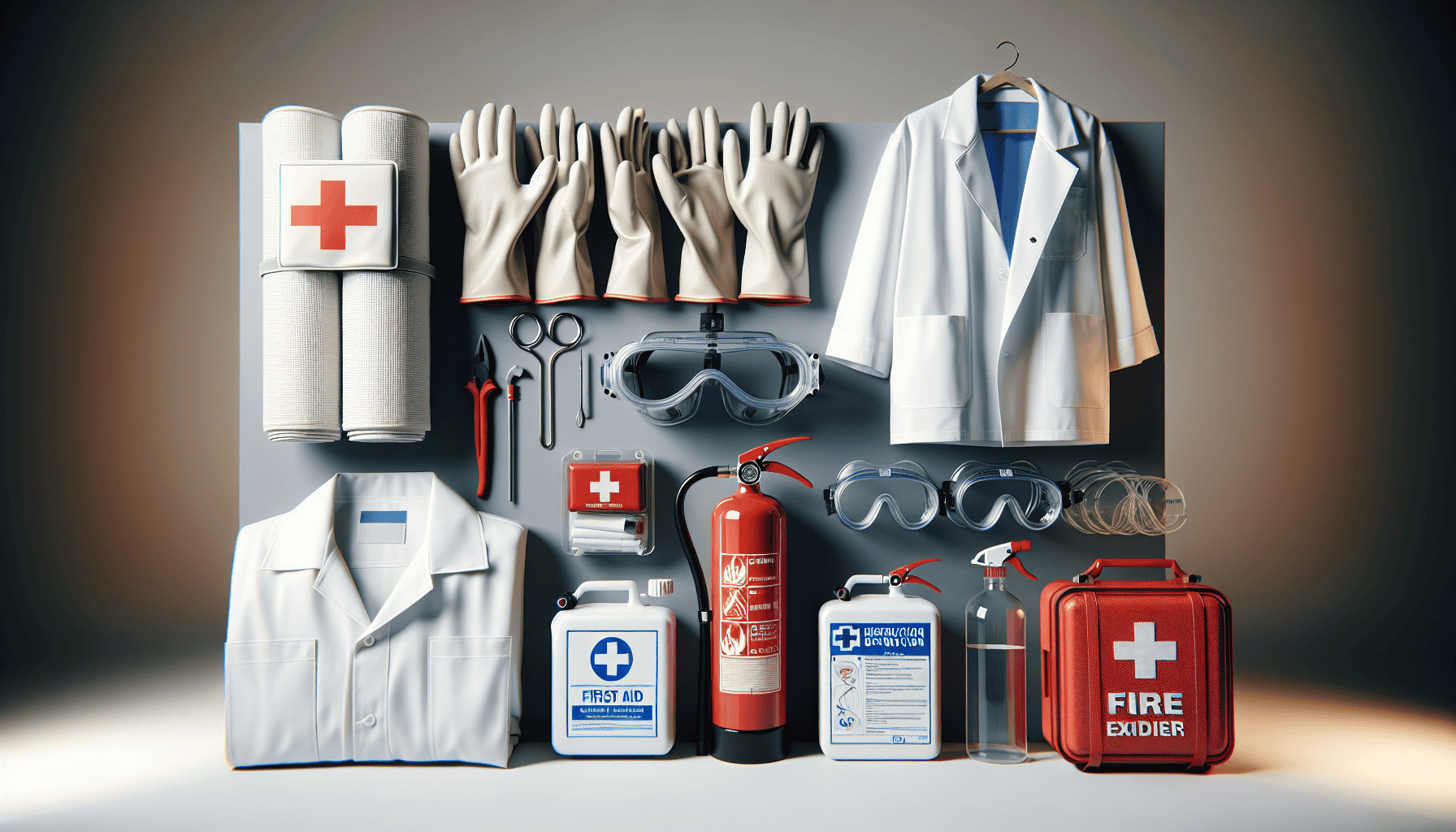You are in the right place if you are looking a list of essential safety equipment for home science labs. Safety should always be your first priority when conducting science experiments at home. Whether you’re a student, parent, or science enthusiast, having the right safety equipment isn’t just a precaution—it’s essential. This guide will help you build a properly equipped home lab that puts safety first.
Quick Safety Checklist
Before we dive into the specific equipment, here’s the list of essential safety equipment for home science labs:
- Protective eyewear
- Safety gloves
- Lab coat or protective clothing
- First aid kit
- Proper storage containers
- Emergency equipment
1. Eye Protection: Your First Line of Defense
Nothing is more important than protecting your eyes during experiments. Even seemingly harmless substances can splash or produce unexpected reactions.
Types of Safety Goggles
Basic Safety Glasses
- Best for: General protection, low-risk experiments
- Features to look for:
- Impact-resistant lens
- Side shields
- Anti-fog coating
- UV protection
- Recommended for: Beginners starting with basic experiments
- Price range: $5-15
Our top pick for beginners: 3M Safety Glasses
- Clear, anti-fog lenses
- Wraparound protection
- Comfortable for extended wear
- ANSI Z87.1 certified
- Check current price on Amazon
Chemical Splash Goggles
- Best for: Experiments involving liquids or chemicals
- Essential features:
- Complete seal around eyes
- Indirect ventilation
- Chemical-resistant materials
- Price range: $12-25
Recommended model: NoCry Protective Safety Lab Goggles
- Fits over prescription glasses
- Superior splash protection
- Adjustable strap
- View details on Amazon
2. Hand Protection: The Right Gloves for Every Task
Different experiments require different types of protection. Here’s what you need:
Nitrile Gloves
- Best for: Most basic experiments
- Why choose these:
- Excellent chemical resistance
- Better puncture resistance than latex
- Suitable for those with latex allergies
- What to buy: Box of 100 gloves
- Price range: $10-25
Top pick: MedPride Nitrile Exam Gloves
- Powder-free
- Available in multiple sizes
- Textured fingertips for better grip
- See pricing on Amazon
Heat-Resistant Gloves
- Essential for: Hot materials and equipment
- Features to look for:
- Heat resistance up to 450°F
- Non-slip grip
- Flexible design
- Price range: $20-30
3. Protective Clothing
Lab Coats
A proper lab coat protects your clothing and skin from spills and splashes.
Essential features:
- 100% cotton material
- Long sleeves with snap closures
- Multiple pockets
- Easy to clean
- Price range: $15-40
Our recommendation: VOGRYE Professional Lab Coat
- Available in multiple sizes
- Durable construction
- Machine washable
- Check sizes and pricing
4. Emergency Equipment
First Aid Kit
Every lab needs a well-stocked first aid kit. Look for one that includes:
- Burn treatment
- Eye wash
- Bandages and gauze
- Antiseptic wipes
- Quick reference guide
Recommended kit: First Aid Only Laboratory First Aid Kit
- OSHA compliant
- Wall-mountable case
- Clear organization
- View kit contents and price
Emergency Eye Wash Station
- Portable or wall-mounted options available
- Minimum 15-minute flush capacity
- Price range: $30-50 for portable units
5. Safe Storage Solutions
Chemical Storage
- Separate incompatible materials
- Clearly labeled containers
- Lockable cabinets recommended
- Price range: $40-100
Recommended storage: LOYALHEARTDY Chemical Storage Cabinet
- Multiple shelves
- Built-in spill containment
- See details and pricing
Safety Equipment Shopping List
That’s what we recommend as essential safety equipment for home science labs. For your convenience, here’s a complete shopping list for setting up your safe home lab, from most to least essential:
- Safety goggles or glasses ($10-20)
- Box of nitrile gloves ($15-25)
- Lab coat ($25-40)
- Basic first aid kit ($20-30)
- Chemical storage containers ($40-100)
- Eye wash station ($30-50)
- Heat-resistant gloves ($20-30)
Total investment for basic safety setup: $160-295
Maintenance and Care
To keep your safety equipment effective:
- Regularly inspect goggles for scratches or damage
- Replace gloves that show signs of wear
- Wash lab coats after each use
- Check first aid supplies monthly
- Keep storage containers clean and properly labeled
Conclusion: Essential Safety Equipment for Home Science Labs
While the initial investment in safety equipment might seem substantial, it’s a non-negotiable aspect of conducting science experiments at home. Start with the essentials (eye protection, gloves, and a first aid kit) and build your safety equipment collection as you advance to more complex experiments.
Remember: The best safety equipment is the one you actually use. Make wearing proper safety equipment a habit from day one, and you’ll be set up for success in your scientific endeavors.
Disclaimer: This article contains affiliate links. When you purchase through these links, SciSeek receives a small commission at no extra cost to you. These commissions help support our mission to provide free science education resources.

